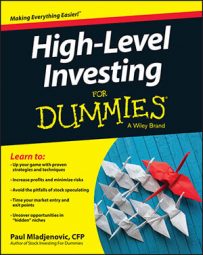When you write (sell) a put option, you receive income (the premium), and in exchange you have an obligation: to purchase the underlying security at the option's strike price if the option is exercised. Given that, here's the first rule of writing put options: Write puts only on stocks or assets that you would love to own.
Think of stocks that would be an excellent addition to your portfolio, see whether the market has pushed the stock price down, and then write a put option. When writing put options, you want to concentrate on companies or industries that are quality — that is, the winners!
Puts are usually associated with making money when stocks or markets fall, so writing puts is almost counterintuitive. The key point with writing puts is that you're obligated to buy the underlying stock. Would you rather be obligated to buy a bad stock or a good stock? In other words, do you want to be forced to buy a stock you hate or one you love?
Cash-secured puts
The put option you write obligates you to purchase the underlying asset if it hits the strike price and gets exercised. Depending on your broker and your account, at a bare minimum you need to have enough cash in your account to cover the potential purchase of 100 shares of stock at the option's strike price.
For example, if you write a put on MMC at a strike price of $25, then you must have at least $2,500 in cash in your brokerage account to cover the potential purchase of 100 shares at $25 per share.
Before you seek to do put writing, have your broker approve you for writing puts and calculate your cash needs for the stocks you're seeking to write puts on. The minimum cash amount that you'll need is based on the strike price in your put option.
Portfolio-secured puts
In case a put option you wrote gets exercised, one way to cover your obligation to buy is to have enough collateral from securities you own in the brokerage account where you're writing put options. With a portfolio-secured put, you own listed stocks that have enough value to be marginable so that you have buying power for your potential purchase.
Say that you write a put on MMC at a $30 strike price. That means that you need to be able to pay (or have the ability to borrow) $3,000 (100 shares times $30 per share). If you have $6,000 in listed marginable securities, then 50 percent of that ($3,000) will be considered buying power.
Please discuss your margin and buying power issues with your broker's customer service department before you attempt any put writing.

